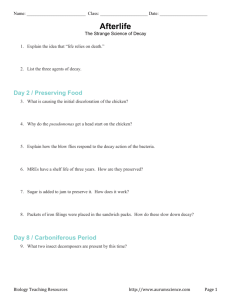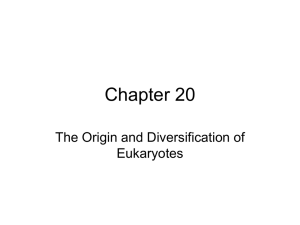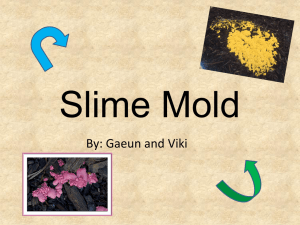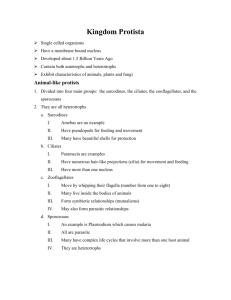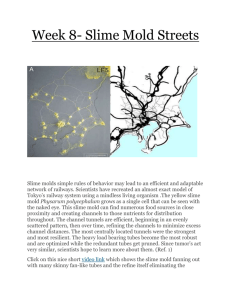1 Fungus-like Protists
advertisement
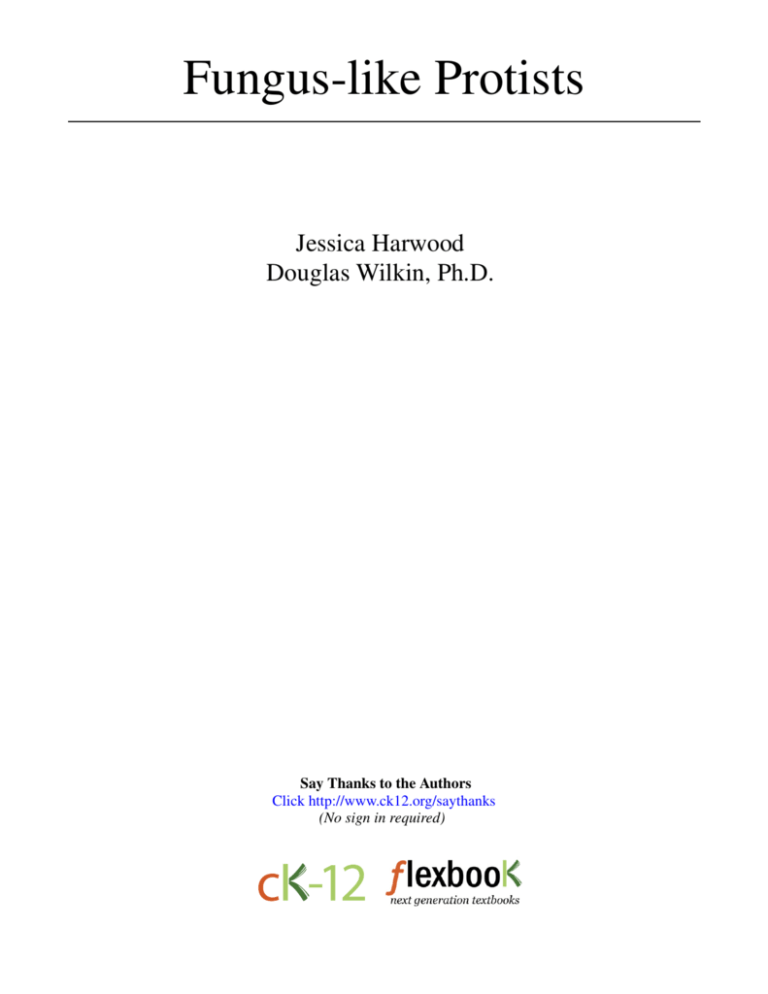
Fungus-like Protists Jessica Harwood Douglas Wilkin, Ph.D. Say Thanks to the Authors Click http://www.ck12.org/saythanks (No sign in required) To access a customizable version of this book, as well as other interactive content, visit www.ck12.org AUTHORS Jessica Harwood Douglas Wilkin, Ph.D. EDITOR Douglas Wilkin, Ph.D. CK-12 Foundation is a non-profit organization with a mission to reduce the cost of textbook materials for the K-12 market both in the U.S. and worldwide. Using an open-content, web-based collaborative model termed the FlexBook®, CK-12 intends to pioneer the generation and distribution of high-quality educational content that will serve both as core text as well as provide an adaptive environment for learning, powered through the FlexBook Platform®. Copyright © 2015 CK-12 Foundation, www.ck12.org The names “CK-12” and “CK12” and associated logos and the terms “FlexBook®” and “FlexBook Platform®” (collectively “CK-12 Marks”) are trademarks and service marks of CK-12 Foundation and are protected by federal, state, and international laws. Any form of reproduction of this book in any format or medium, in whole or in sections must include the referral attribution link http://www.ck12.org/saythanks (placed in a visible location) in addition to the following terms. Except as otherwise noted, all CK-12 Content (including CK-12 Curriculum Material) is made available to Users in accordance with the Creative Commons Attribution-Non-Commercial 3.0 Unported (CC BY-NC 3.0) License (http://creativecommons.org/ licenses/by-nc/3.0/), as amended and updated by Creative Commons from time to time (the “CC License”), which is incorporated herein by this reference. Complete terms can be found at http://www.ck12.org/terms. Printed: February 10, 2015 CONTRIBUTORS Doris Kraus, Ph.D. Niamh Gray-Wilson Jean Brainard, Ph.D. Sarah Johnson Jane Willan Corliss Karasov www.ck12.org C HAPTER Chapter 1. Fungus-like Protists 1 Fungus-like Protists • Describe features of the fungus-like protists. • Distinguish slime molds from water molds. What’s shrouding this dead insect? The thin filaments growing out of this dead insect look a little like a fungus. Also this mystery organism, like a fungus, is feeding on decaying matter. However, this is not a fungus. This organism is a type of fungus-like protist, known as water mold. Fungus-like Protists Fungus-like protists share many features with fungi. Like fungi, they are heterotrophs, meaning they must obtain food outside themselves. They also have cell walls and reproduce by forming spores, just like fungi. Fungus-like protists usually do not move, but a few develop movement at some point in their lives. Two major types of funguslike protists are slime molds and water molds. Slime Molds Slime molds usually measure about one or two centimeters, but a few slime molds are as big as several meters. They often have bright colors, such as a vibrant yellow ( Figure 1.1). Others are brown or white. Stemonitis is a kind of slime mold which forms small brown bunches on the outside of rotting logs. Physarum polycephalum lives inside rotting logs and is a gooey mesh of yellow "threads" that are several centimeters long. Fuligo, sometimes called “vomit mold,” is a yellow slime mold found in decaying wood. 1 www.ck12.org FIGURE 1.1 An example of a slime mold. Water Molds Water molds mostly live in water or moist soil. They can be parasites of plants and animals, getting their nutrients from these organisms and also from decaying organisms. They are a common problem for farmers since they cause a variety of plant diseases. One of the most famous of these diseases was the fungus that caused the Irish potato famine in the 1800s. At this time, potatoes were the main source of food for many of the Irish people. The failure of the potato crop meant that many people in Ireland died of starvation or migrated to other countries. Summary • Slime molds are fungus-like protists that grow as slimy masses on decaying matter. They are commonly found on items such as rotting logs. • Water molds are fungus-like protists present in moist soil and surface water; they live as parasites or on decaying organisms. Explore More Use the resources below to answer the questions that follow. Explore More I • The Blob: Slime Mold at http://herbarium.usu.edu/fungi/FunFacts/slimemold.htm . 1. Why are slime molds not classified as fungi? 2. What does a plasmodial slime mold eat? 3. What is different about the nucleus of the single cell of the plasmodial slime mold? 2 www.ck12.org Chapter 1. Fungus-like Protists Explore More II • John Bonner’s Slime Mold Movie at http://www.youtube.com/watch?v=bkVhLJLG7ug (1:42) MEDIA Click image to the left or use the URL below. URL: http://www.ck12.org/flx/render/embeddedobject/57455 1. What happens when you separate the cells of a slime mold? 2. Do you think this behavior represents intelligence? Why or why not? 3. Slime molds will form stalks with fruiting bodies. a. What happens to the cells of the stalk? b. What happens to the cells of the fruiting body? Review 1. What are examples of fungus-like protists? 2. How do water molds get their nutrients? References 1. National Park Service. Slime mold. . Public Domain 3



